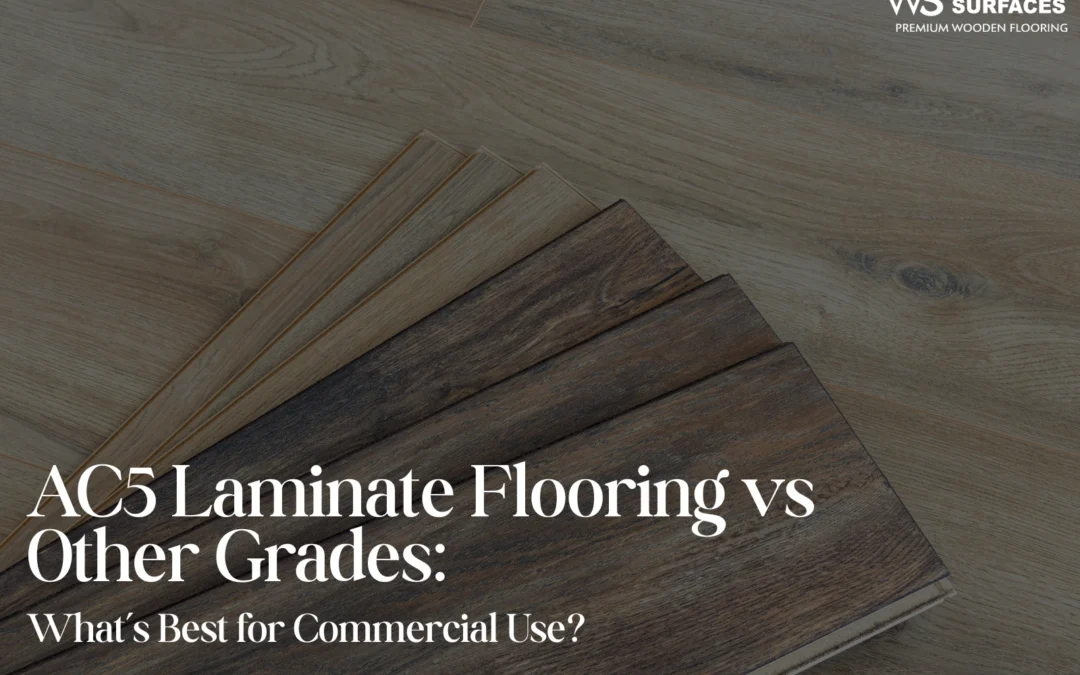When you step into a bustling office lobby, a busy retail store, or a restaurant that sees hundreds of visitors every day, one thing silently works harder than almost anything else—the floor. The choice of flooring for commercial projects is not just about appearance; it’s about strength, endurance, and performance. Among the many options available, laminated flooring has carved out a reputation as a versatile solution. But within the world of laminates, the grading system plays a crucial role in determining suitability. This is where the exploration of AC5 laminated flooring for commercial environments truly starts.
This blog unpacks the differences between laminate flooring grades, explores why AC5 is the star of high-traffic spaces, and helps businesses decide what’s truly best for their environment.
Laminate Flooring Grades Explained
The AC rating, also known as Abrasion Class, is the universal system for grading laminated wood flooring. This rating measures how well the flooring surface can withstand everyday wear—scratches, scuffs, impacts, and even stains. Think of it as a scale of toughness, guiding architects, contractors, and property owners toward the right fit.
AC1: Gentle use. Perfect for bedrooms or guest rooms with minimal traffic.
AC2: Still residential but a bit tougher, often installed in living rooms or dining areas.
AC3: A balance point. Suitable for residential spaces with frequent foot traffic and some light commercial areas like small offices.
AC4: A strong contender. This grade is often used in moderately busy commercial areas—boutiques, shared workspaces, or cafes.
AC5: The heavyweight champion. Designed for high-traffic areas, AC5 laminate flooring resists wear from constant walking, furniture movement, and daily maintenance in environments like schools, malls, offices, and airports.
By looking at this spectrum, it becomes clear why higher grades are prioritized for business use: the stakes are higher, and downtime from damaged floors can cost money and reputation.
Why AC5 Stands Out in Commercial Spaces
The difference between AC4 and AC5 may seem subtle at first glance, but the durability leap is significant. AC5 laminate flooring is engineered with a more resilient wear layer, offering outstanding resistance to abrasions, stains, and even moisture when maintained correctly.
In connection with the installation of commercial-grade laminate flooring, this denotes:
- Flooring that maintains its finish even under constant pressure.
- Fewer worries about visible damage from rolling chairs, strollers, or delivery carts.
- A long lifecycle that reduces the frequency of replacement.
In short, AC5 is not only about toughness but also about reducing long-term costs. While it may carry a slightly higher upfront price tag compared to lower-grade laminates, its ability to withstand years of punishment in high-traffic areas makes it cost-effective in the bigger picture.
Aesthetics Without Compromise
Commercial flooring must provide durability while maintaining an attractive appearance. Businesses invest in creating an inviting atmosphere for employees, clients, and customers. The best part is, high-traffic laminate flooring offers both resilience and design
Modern AC5 laminates come in an astonishing variety of finishes: from rustic oak and rich walnut to sleek stone and contemporary concrete looks. This allows designers to maintain branding consistency and create the right ambiance while still meeting functional demands.
So, whether it’s a hotel lobby aiming for luxury or a coworking space seeking modern minimalism, AC5 options allow creativity without compromise.
Comparing AC5 with Other Grades in Real Scenarios
Let’s walk through real examples so the differences become crystal clear:
- Retail Store: AC3 might hold up in a boutique with limited customers, but a shopping center with constant footfall needs AC5 to avoid premature wear.
- Corporate Office: AC4 can handle medium-traffic conference rooms or break areas. But in hallways, entrances, and cafeterias where hundreds move daily, AC5’s durability ensures the floor won’t fade or scratch easily.
- Hospitality Spaces: Hotels, restaurants, and event venues see unpredictable and heavy use. In these cases, AC5 proves to be the safer long-term investment.
The pattern is clear: while lower grades may work in smaller or quieter spaces, AC5 is the most reliable when the environment demands consistent performance.
The Role of a Laminate Flooring Company in Your Decision
Choosing the right product isn’t just about knowing grades—it’s also about working with the right partner. A reliable Laminate Flooring Company not only provides certified products but also offers technical guidance, installation support, and after-sales service.
Commercial spaces benefit greatly from suppliers who understand the nuances of different grades and can recommend flooring tailored to the specific traffic patterns and maintenance expectations of a business. Partnering with such a company ensures that you’re not just buying a product but investing in a flooring solution built to last.
Final Thoughts
AC5 laminate flooring, when compared to other grades, proves its value more evidently in light of commercial requirements. While AC3 and AC4 are suitable for lighter to moderate settings, AC5 provides the durability, aesthetics, and cost-efficiency required in spaces that never stop moving.
For businesses where flooring is more than just a surface—where it becomes part of the customer experience and employee comfort—the right choice is not just about today but about years ahead. AC5 stands tall in that respect, ensuring that commercial environments remain functional, stylish, and resilient.

